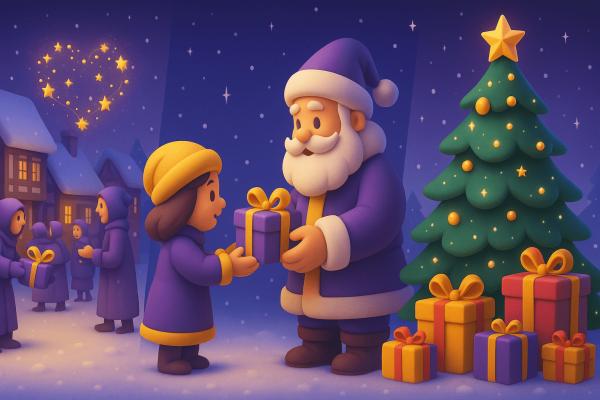Conținut

Today, it’s hard to imagine Christmas without the exchange of gifts. Wrapped presents under twinkling trees have become the heart of holiday celebrations across the globe. But Christmas wasn’t always about shopping lists, stockings, and Santa. The story of how it evolved into the world’s biggest gift-giving holiday is as rich and layered as the holiday itself — blending religion, folklore, culture, and commerce.
Let’s unwrap the surprising journey of Christmas gifting.
Ancient Roots: Winter Festivals and Offerings
Long before Christmas existed, ancient civilizations marked the winter solstice with festivals of light, feasting, and — yes — gift-giving.
- Saturnalia, celebrated in ancient Rome around December 17–23, honored the god Saturn with role reversals, revelry, and small presents like candles, dolls, and tokens of luck.
- In Norse and Germanic traditions, Yule celebrated the rebirth of the sun and involved feasting, decorations, and offerings to gods and spirits.
These early winter celebrations set the tone for what would eventually become Christmas: a time of generosity, warmth, and communal joy during the coldest, darkest days of the year.
Christian Influence: The Gifts of the Magi
The Christian story of Christmas added new meaning to the tradition of giving. According to the Gospel of Matthew, three wise men (or Magi) brought gifts of gold, frankincense, and myrrh to the infant Jesus — symbolic offerings honoring him as king, priest, and savior.
Early Christians emphasized spiritual reflection over material exchange, but the Magi's gesture helped root the concept of giving into the Christmas narrative, especially in cultures that later emphasized Epiphany (January 6) as the day of gift-giving.
Saint Nicholas and the Rise of the Gift-Bringer
In the 4th century, St. Nicholas, a Greek bishop known for secret gift-giving and helping the poor, became a central figure in holiday lore. His reputation spread across Europe, inspiring traditions of anonymous gift-givers.
By the Middle Ages, children in parts of Europe received gifts on St. Nicholas Day (December 6). As his legend merged with local folklore and eventually transformed into Santa Claus, the focus of Christmas began to shift from solemn religious observance to joyful family-centered giving.
Victorian Revival: Christmas Reinvented
The modern version of Christmas gifting took shape in the 19th century. In Victorian England:
- Writers like Charles Dickens (with A Christmas Carol) romanticized generosity and compassion during the holidays.
- Queen Victoria and Prince Albert popularized Christmas trees, borrowed from German traditions, which became central to displaying gifts.
This era also saw the rise of commercialization, with stores decorating windows and marketing gifts specifically for Christmas. Wrapping paper, cards, and seasonal advertising began to take off — especially in America.
20th Century: Santa, Shopping, and Scale
In the 20th century, especially post-WWII, Christmas transformed into a massive commercial phenomenon:
- Coca-Cola’s red-suited Santa (1930s) cemented the jolly gift-bringer’s modern look.
- The rise of department stores and mass production made gifts more accessible to all social classes.
- Black Friday and later Cyber Monday solidified Christmas as the centerpiece of the global retail calendar.
Yet despite the commercialization, the core spirit of giving remained: showing care, making memories, and strengthening bonds with loved ones.
Final Thoughts
From ancient solstice rituals to modern shopping sprees, Christmas has always been about more than just gifts — it’s about warmth, connection, and generosity during the coldest time of year. While the way we give may have changed, the heart behind it hasn’t. So whether it’s a handmade card or a big surprise under the tree, each gift is a small way of saying, “You matter to me.”
